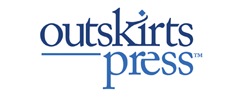
Since October is (believe it or not) National Cookbook Month, we offer you 7 important steps to publishing a cookbook.
1. Develop your cookbook idea. What type of cookbook do you want to write? What will make your cookbook unique? Who is your target audience? Once you have a good understanding of your cookbook idea, you can start to develop your recipes.
2. Test and refine your recipes. Make sure your recipes are easy to follow and produce delicious results. Test each recipe multiple times and get feedback from friends and family.
3. Write your cookbook. This includes writing your recipes, introductions, headnotes, and other content. Be sure to write in a clear and concise style, and use language that is accessible to your target audience.
4. Edit and proofread your cookbook. Once you have finished writing your cookbook, have it edited and proofread by a professional editor (the resources available at the self-publisher you choose in Step #6 can probably help with this). This will help to ensure that your cookbook is free of errors and easy to read.
5. Design your cookbook layout. The layout of your cookbook should be visually appealing and easy to navigate. Consider hiring a professional book designer to help you create a layout that will showcase your recipes and photos in the best possible light, or choose from the available and/or included options with your self-publishing company (see below).
6. Select a self-publishing company. While there are “free” platforms available like KDP and IngramSpark, you will find it noticeably difficult (perhaps even impossible) to publish a quality, full-color cookbook with them due to their automated processes, lack of flexibility, and (in some cases) lack of actual full-color printing. This is really where full-service self-publishing companies shine, and there are a number to choose from, including AuthorHouse, Outskirts Press, and Xlibris. Choose a platform that offers the features and services that are important to you, such as print and ebook distribution, marketing tools, and author support.
7. Publish your cookbook. Once you have selected a self-publishing company, you can upload your cookbook files and publish your book with their collaborative support. Be sure to set a competitive price and promote your cookbook through social media, your website, and other channels.
Here are some additional tips for self-publishing a cookbook:
- Take high-quality photos of your recipes. Food photography is important for any cookbook, but it is especially important for self-published cookbooks. Consider hiring a professional food photographer to take photos of your recipes.
- Get your cookbook reviewed. Book reviews are a great way to generate interest in your cookbook and attract new readers. Reach out to food bloggers and other cookbook authors to see if they would be interested in reviewing your book.
- Promote your cookbook on social media. Social media is a great way to connect with potential readers and promote your cookbook. Be sure to post regularly about your cookbook on social media and share photos and videos of your recipes.
Self-publishing a cookbook can be a lot of work, but it is a rewarding experience. By following these steps, you can create a high-quality cookbook that your readers/eaters will love.
This content was enhanced through collaboration with AI-powered creativity applications.



